After I posted a recent article about MC Hammer and the Legend of Zelda, a reader named Adamant asked a follow-up question:
is the Disco Inferno reference in Link’s Awakening (when you get the fire rod) in the Japanese version as well, or was that added in the localization?
Specifically, the question is referring to the phrase, “Burn, baby, burn!” that appears when you get the Fire Rod in the English release:
 |
If, by some chance, you’re not familiar with the Disco Inferno song, it repeats the phrase, “Burn, baby, burn” over and over:
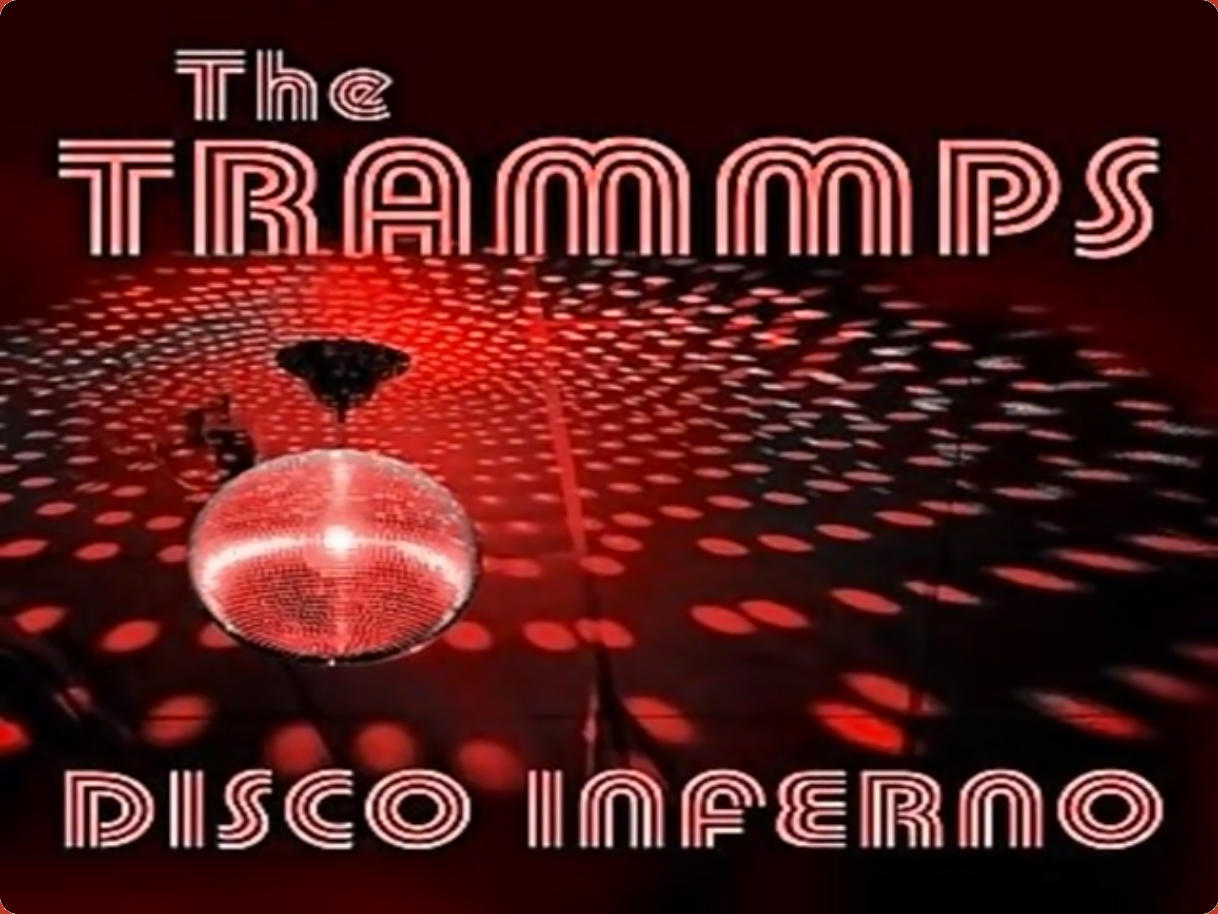
So, did the Japanese version have this too? Let’s take a look:
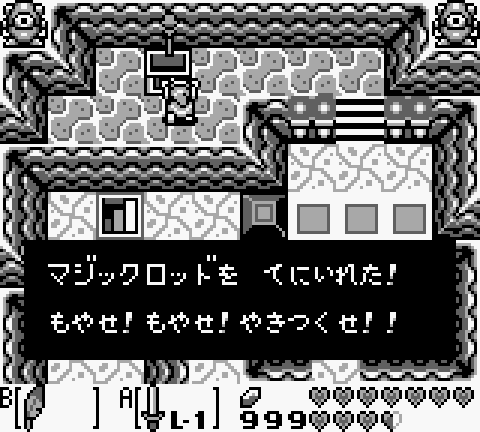 |  |
| Japanese text | Basic translation | Official translation |
| マジックロッドを てにいれた! | You got the Magic Rod! | You’ve got the Magic Rod! |
| もやせ!もやせ!やきつくせ! | Burn! Burn! Burn it all! | Now you can burn things! Burn it! |
After doing some double-checking, it looks like the Japanese line is just meant to be taken completely at face-value; it’s not a quote or anything.
And, as we can see, the English localization adds in the extra pop culture reference at the end.
To be honest, if I was translating this game from scratch and had no prior knowledge of stuff, the Japanese line probably would’ve inspired me to use “burn, baby, burn” too. Not because of any actual connection to the song, but simply because there are three short phrases in a row about burning. So I can kind of see how the localizers hit upon the idea of including the quote.
So, in the previous game, a pop culture reference in the original Japanese game was removed in the English version, but in this game, a pop culture reference was added into the English version that wasn’t in the Japanese version. I guess maybe there’s just something about these games that make Nintendo’s staff want to insert tiny references.


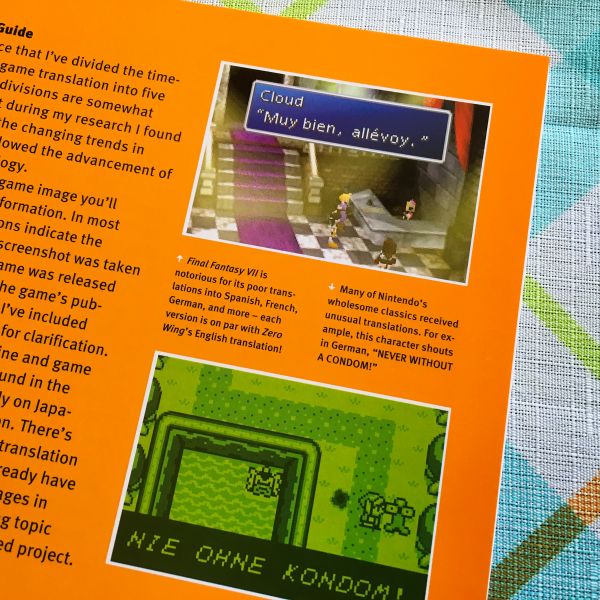
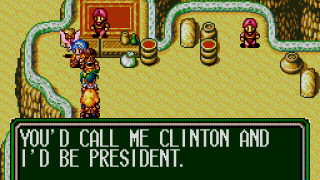
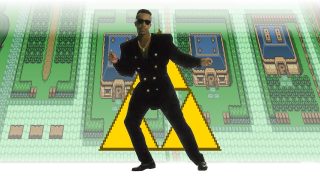
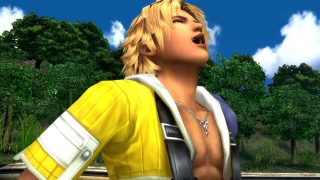
Personally, i’d have gone with “That’s where the leprechaun lives. He tells me to burn things.”
Also, if you wanna try the DX version, you can download it cheap on the 3DS, and i know you have a 3DS.
I would have gone with “Burnination” myself.
I also have a suspicion the peculiar, anticedent-less “burn it!” is a Beavis and Butthead reference.
Never really thought of that as a pop culture reference before. I guess it’s one of those lines that has been used enough times to almost become its own thing without you having to know where it came from. 😛
That’s funny, as it is a game that is quite whimsical with tons of references to other games (mostly Mario) and was initially a fun spinoff in the Zelda series that didn’t take itself so serious, I actually don’t find this reference in the English version as out of place as the reference the Japanese put in the SFC Zelda.
I have to say that if you already played the original release, and as recently as last year, I must say, don’t bother with the DX. It’s just a dumbed down version of the same game where they basically just made the game easier (something this game definitely didn’t need). It has color yes, but it mostly just looks like one of those badly colored B&W films. But I’m just a purist, so what do I know.
This is probably a stupid question… Mato, in both A Link to the Past and Link’s Awakening (both Japanese & English scripts) there’s something I haven’t seen that much of in other game scripts, at least not as frequently used as in these two titles, namely very often alot of ellipses … … … … … in that kind of fashion. While I do understand the Japanese language use a more varied number of dots for their ellipsis, I earlier thought they either went with just two, three or a six dot variety? I suspect these are probably used to convey speechlessness or often in the case of Zelda make a dramatic pause after the important info just told, rather than just an omission or trailing off into silence. I just don’t recall seeing it used this often as in these two titles. Maybe it is more usual than I think. I’m a little confused if there’s a “correct” way or a “wrong” way to deal with it. Please explain this ellipsis madness to a newbie.
All I have to add to the discussion is that the DX version is definitely the one that I would recommend over the original for sure. The only differences between the two are a few glitches fixed, one bonus dungeon added, a new photo album sidequest and COLOURS everywhere! I didn’t notice any difficulty change, unless one counts the reward from the bonus dungeon as that.
Both versions are pretty much the exact same game at heart.
What I meant by the DX being easier is all the stupid and unnecessary hand-holding hints they added for the dungeons in the DX version. But they tweaked gameplay as well, I recall the Genie boss throw his fireballs more slowly etc. They also changed the contents of the treasure chests in the dungeons – often with a higher amount of rupees or medicine, the latter which could only be bought in the original. And yes, the added Tunic (even if optional) makes the game easier.
Another thing that was for the worse is that you cannot longer skip a character’s dialogue by pressing B. All versions of the DX release was censored as well and most of the glitches in the original game was fixed for v1.1 anyway.
From what I’ve seen, the Switch remake removes the disco reference.